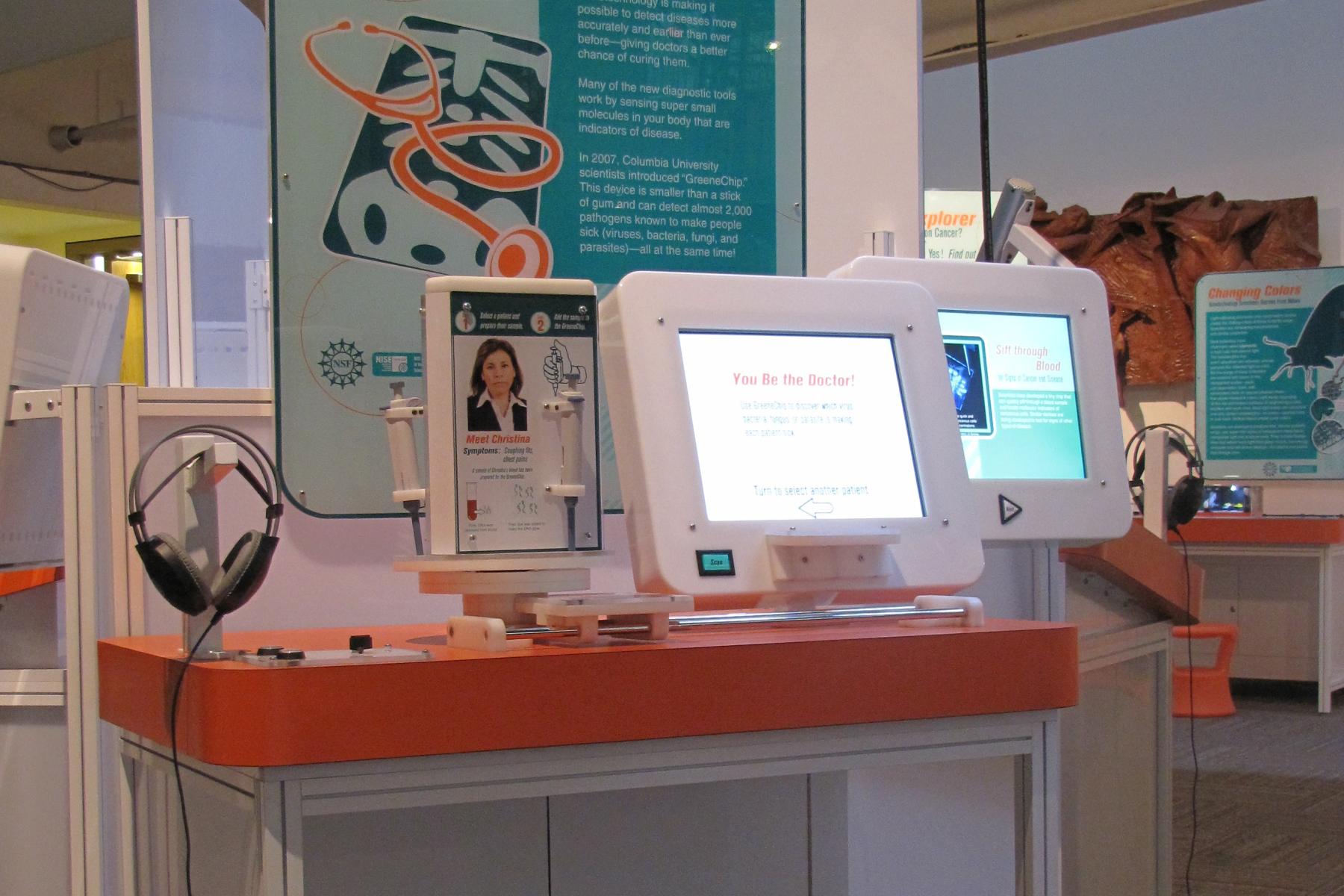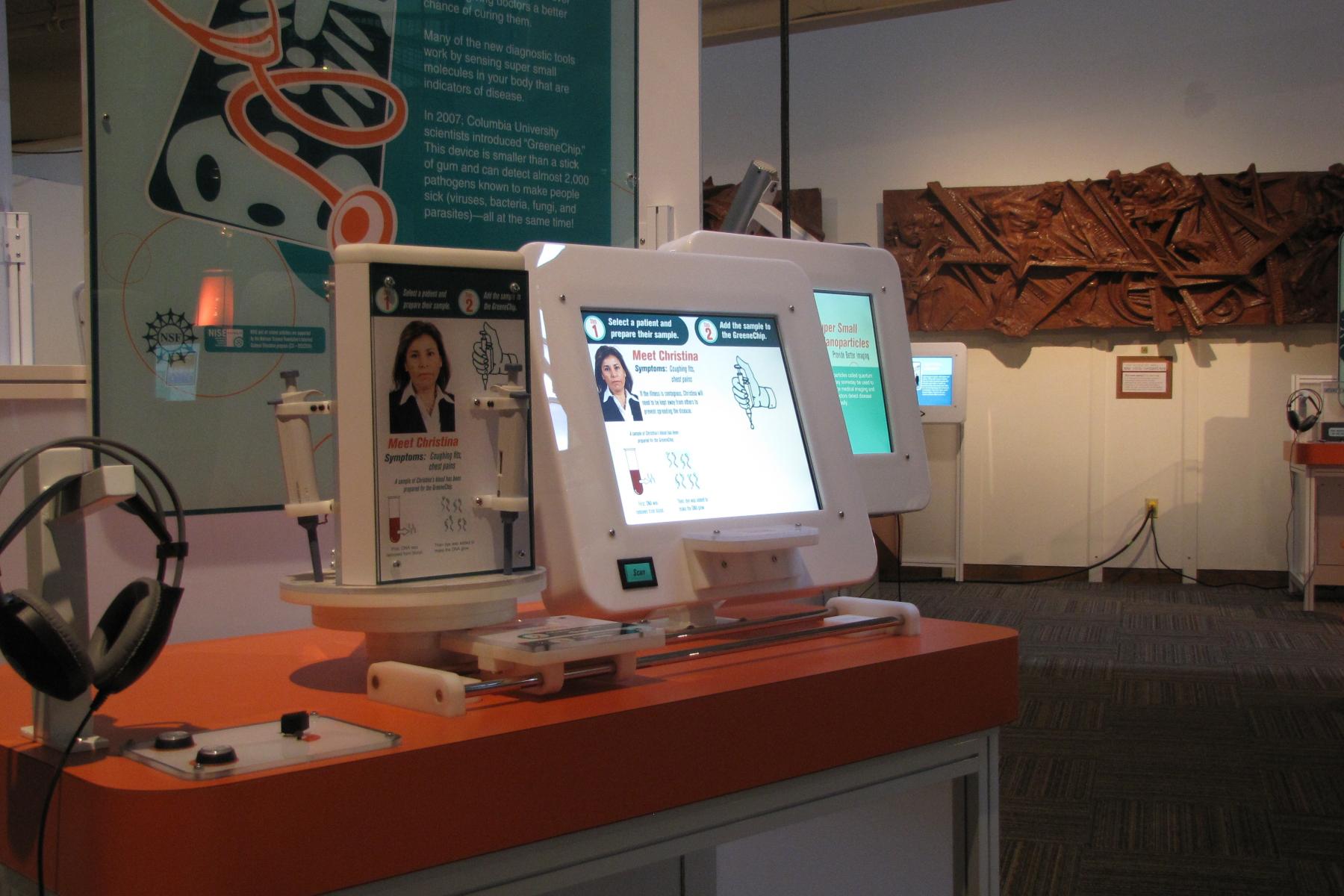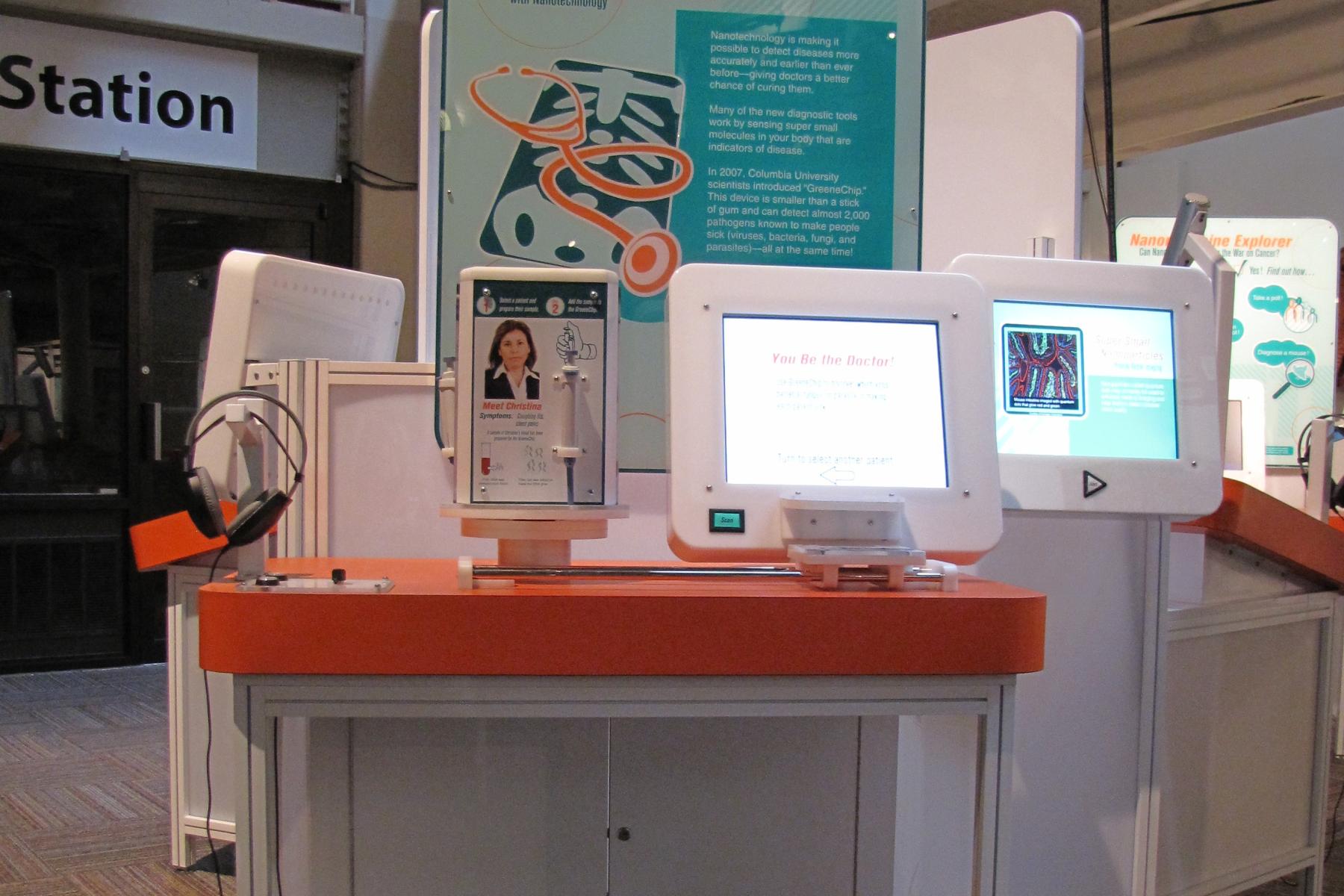DESCRIPTION
This exhibit introduces new ways of diagnosing and monitoring disease by using nanomaterials. Visitors conduct a lab test by select one of three sick patients and using a real pipette to add the patient’s blood sample to a glass slide (the GreeneChip). An on-screen animation explains what happens at the nanoscale, and the visitor is presented with a diagnosis.
This exhibit was part of the Nanotechnology: What's the Big Deal? exhibition which toured the Arkansas Discovery Network beginning in 2010.
DESCRIPTION
This exhibit introduces new ways of diagnosing and monitoring disease by using nanomaterials. Visitors conduct a lab test by select one of three sick patients and using a real pipette to add the patient’s blood sample to a glass slide (the GreeneChip). An on-screen animation explains what happens at the nanoscale, and the visitor is presented with a diagnosis.
This exhibit was part of the Nanotechnology: What's the Big Deal? exhibition which toured the Arkansas Discovery Network beginning in 2010.
TRAINING VIDEOS
OBJECTIVES
BIG IDEA
Researchers are working to better detect disease with nanotechnology.
LEARNING GOALS
Diseases can be detected before a patient has any noticeable symptoms.
A patient has a better chance of beating a disease if treatment starts very early in the disease's progression.
The GreeneChip tests for many different diseases at the same time using genetic material from a pathogen "library" and a sample from the patient.
NANO CONTENT MAP
Nanoscience, nanotechnology, and nanoengineering lead to new knowledge and innovations that weren't possible before.
DOWNLOAD FILES
- Detecting Disease Brochure (PDF)
- Detecting Disease Construction Drawings (PDF)
- Detecting Disease Technical Manual (PDF)
- Detecting Disease Application Screen 1 of 3 (JPG)
- Detecting Disease Application Screen 2 of 3 (JPG)
- Detecting Disease Application Screen 3 of 3 (JPG)
- Detecting Disease Panel Graphic 1 of 3 (PDF)
- Detecting Disease Panel Graphic 2 of 3 (PDF)
- Detecting Disease Panel Graphic 3 of 3 (PDF)
- Graphic NSF Credit (PDF)
- Detecting Disease Interactive Media Screen 1 of 15 (JPG)
- Detecting Disease Interactive Media Screen 2 of 15 (JPG)
- Detecting Disease Interactive Media Screen 3 of 15 (JPG)
- Detecting Disease Interactive Media Screen 4 of 15 (JPG)
- Detecting Disease Interactive Media Screen 5 of 15 (JPG)
- Detecting Disease Interactive Media Screen 6 of 15 (JPG)
- Detecting Disease Interactive Media Screen 7 of 15 (JPG)
- Detecting Disease Interactive Media Screen 8 of 15 (JPG)
- Detecting Disease Interactive Media Screen 9 of 15 (JPG)
- Detecting Disease Interactive Media Screen 10 of 15 (JPG)
- Detecting Disease Interactive Media Screen 11 of 15 (JPG)
- Detecting Disease Interactive Media Screen 12 of 15 (JPG)
- Detecting Disease Interactive Media Screen 13 of 15 (JPG)
- Detecting Disease Interactive Media Screen 14 of 15 (JPG)
- Detecting Disease Interactive Media Screen 15 of 15 (JPG)
- Detecting Disease Audio (WAV)
- Exhibits and Programs Year 5 Summative Evaluation (PDF)
- Detecting Disease Audio (Spanish) (WAV)
Credits
Developed for the NISE Network with funding from the National Science Foundation under Award Numbers 0532536 and 0940143. Any opinions, findings, and conclusions or recommendations expressed in this product are those of the authors and do not necessarily reflect the views of the Foundation.
Creative Commons Attribution Non-Commercial Share Alike 3.0 United States (CC BY-NC-SA 3.0 US).
View more details

NISE Network products are developed through an iterative collaborative process that includes scientific review, peer review, and visitor evaluation in accordance with an inclusive audiences approach. Products are designed to be easily edited and adapted for different audiences under a Creative Commons Attribution Non-Commercial Share Alike license. To learn more, visit our Development Process page.



